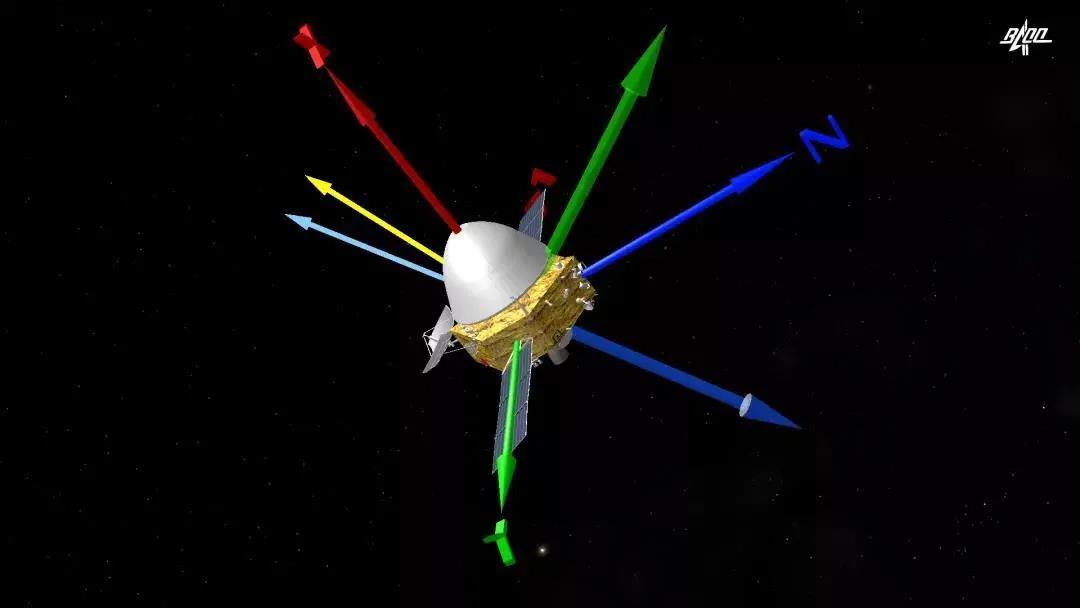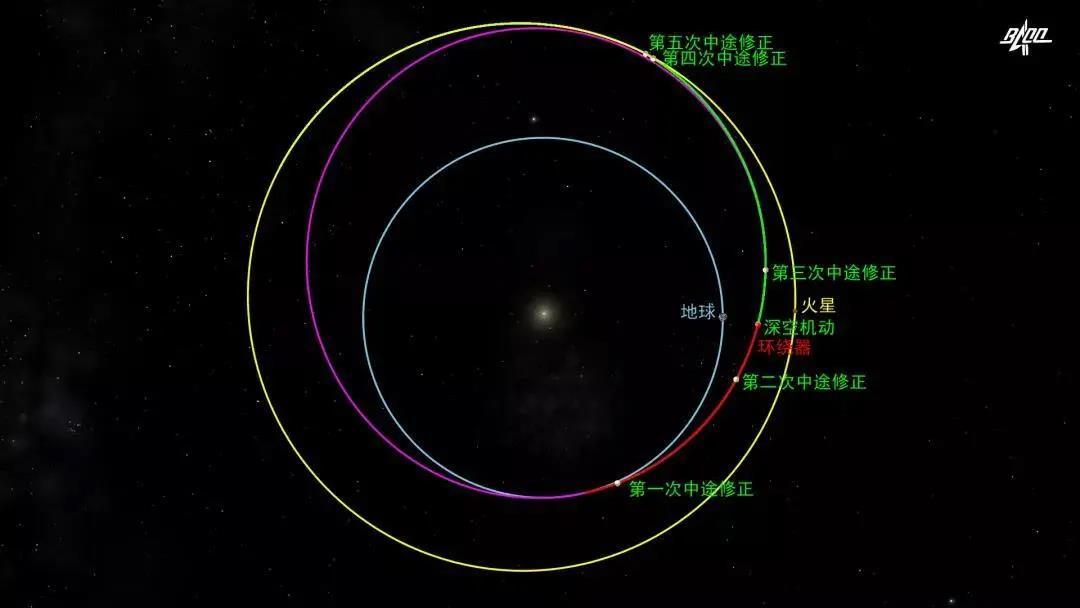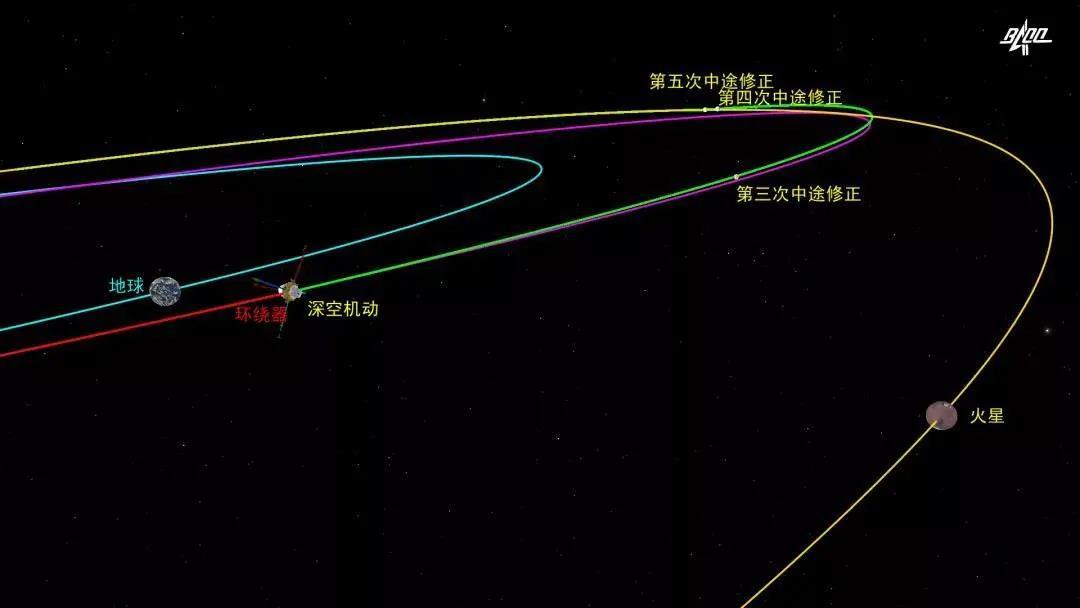
NEWS
Launched to Mars! Tianwen-1 succeeded in completing deep-space maneuver
发布时间:
2020-11-10 15:22
The main engine of Tianwen-1 probe was ignited for over 480s, and succeeded in completing deep-space maneuver at 23:00 on October 9, 2020 under the control of the flight control team of Chinese first Mars exploration task. Corrections refer to the orbit control made to make the probe fly along the preset orbit, to decrease the flight deviation, while maneuvers refer to the orbit control made to change the current orbit of the probe and make it enter another new orbit. The orbit maneuver was made in a deep space located about 29.4 million km away from the Earth.
The orbit change is vital for “Tianwen-1” Mars exploration task. So far, the flying orbit of the probe has been changed to the orbit that can be accurately captured by Mars and precisely intersected with it. The probe will be intersected with Mars after flying for about 4 months in the current orbit, during which the orbit will be corrected in the midway for 2-3 times.

▲Schematic Diagram for the Pose Alignment of the Probe
What is deep-space maneuver? What’s the difference with orbit correction?
According to the Mars Orbiter Team in Shanghai Academy of Spaceflight Technology, deep-space maneuver refers to the orbit maneuver implemented in the Earth-Mars Transfer Section. By implementing deep-space maneuver, the original flying speed and direction of the probe can be changed, so that it can fly to Mars along the changed orbit. The deep-space maneuver is based on the joint optimization of the carried in-orbit trajectory and the Earth-Mars transfer orbit, and can improve thecarrier capacity, increase the emission quality of the probe, and make it carry more propellant, and better fulfill the exploration task. Different from conventional midway corrections with smaller speed increment and shorter engine working time, the probe can enter the precise orbit of Mars from the emitted escape transfer orbitduring the deep-space maneuver, allowing it to possess big speed increment, and long engine working time, so it’s quite demanding on the control and propelling system of the probe.
![]()
![]()
![]()
![]()
![]()
![]()
![]()
![]()
![]()

▲Schematic Diagram for the Deep-space Maneuver Orbit of the Probe
“Three advantages” of deep-space maneuver
By using deep-space maneuver in the orbit design and control, the Mars Orbiter Team in Shanghai Academy of Spaceflight Technology has not only succeeded in adding the carrying volume of propellant for the probe, but also realized three objectives. First of all, deep-space maneuver can divide a big capture speed increment into two smaller speed increments, which can decrease the single working time of the engine, and ensure that the engine is reliable in operation. Meanwhile, deep-space maneuver can help calibrate 3000N engine, and its thrust and specific impulse in the process. Besides, precise engine calibration parameters can better ensure the Mars capture precision. Based on the deep-space maneuver, the Mars Orbiter Team in Shanghai Academy of Spaceflight Technology has optimized the time of arrival for the probe, obtained the light and communication conditions at more favorable capture points, and also shortened the Mars shadow time (the shadow area covered by Mars when the probe enters the sunlight) of the probe in the capture and the blind area of communication.
![]()
![]()
![]()
![]()
![]()
![]()
![]()

▲Schematic Diagram for Deep-space Maneuver Orbit of the Probe
How to realize deep-space maneuver?
The deep-space maneuver task requires the Mars Orbiter Team in Shanghai Academy of Spaceflight Technology to make orbital transfer strategies for deep-space maneuver based on the preset time of arrival on Mars, the orbit parameters and the real-time measurement and control of orbit determination parameters, complete corresponding control on the pose and orbit of the probe, and make sure that the probe can enter the orbit precisely intersected with Mars after completing deep-space maneuver. To achieve precise orbit determination for ground measurement and control as well as the precise and autonomous on-device orbit control, the ground orbit determination task for the probe in the deep-space maneuver was jointly completed by our deep-space measurement and control station and observatory, to ensure the precise orbit determination demand for the probe. The Mars orbiter is provided with highly precise gyroscope, accelerometer and the on-device computer with fault recognition and independent processing capacity, so that the orbit can be controlled precisely and independently, and the orbit control can be highly precise and reliable.
Aiming at 300 million km, the precision is superior to the design index
Mars is about 300 million km away from the orbiter in the deep-space maneuver capture aimed by the orbiter, and the error is controlled at about 200km, equivalent to aiming at a 0.8m-diameter target in about 1,200km distance from Beijing to Shanghai. Under the constant endeavors made by the Mars Orbiter Team in Shanghai Academy of Spaceflight Technology, the actual precision controlled for the deep-space maneuver is superior to the design index. Next, the team will work on the iterative optimization of midway correction strategies as per the actual flying status of the probe, and keep correcting the orbit of Mars precisely based on midway corrections, so that the probe can enter the Mars capture corridor precisely as planned, be captured by Mars gravity and enter the orbit around Mars, to prepare for landing and the follow-up scientific exploration, etc.
Source: China National Space Administration